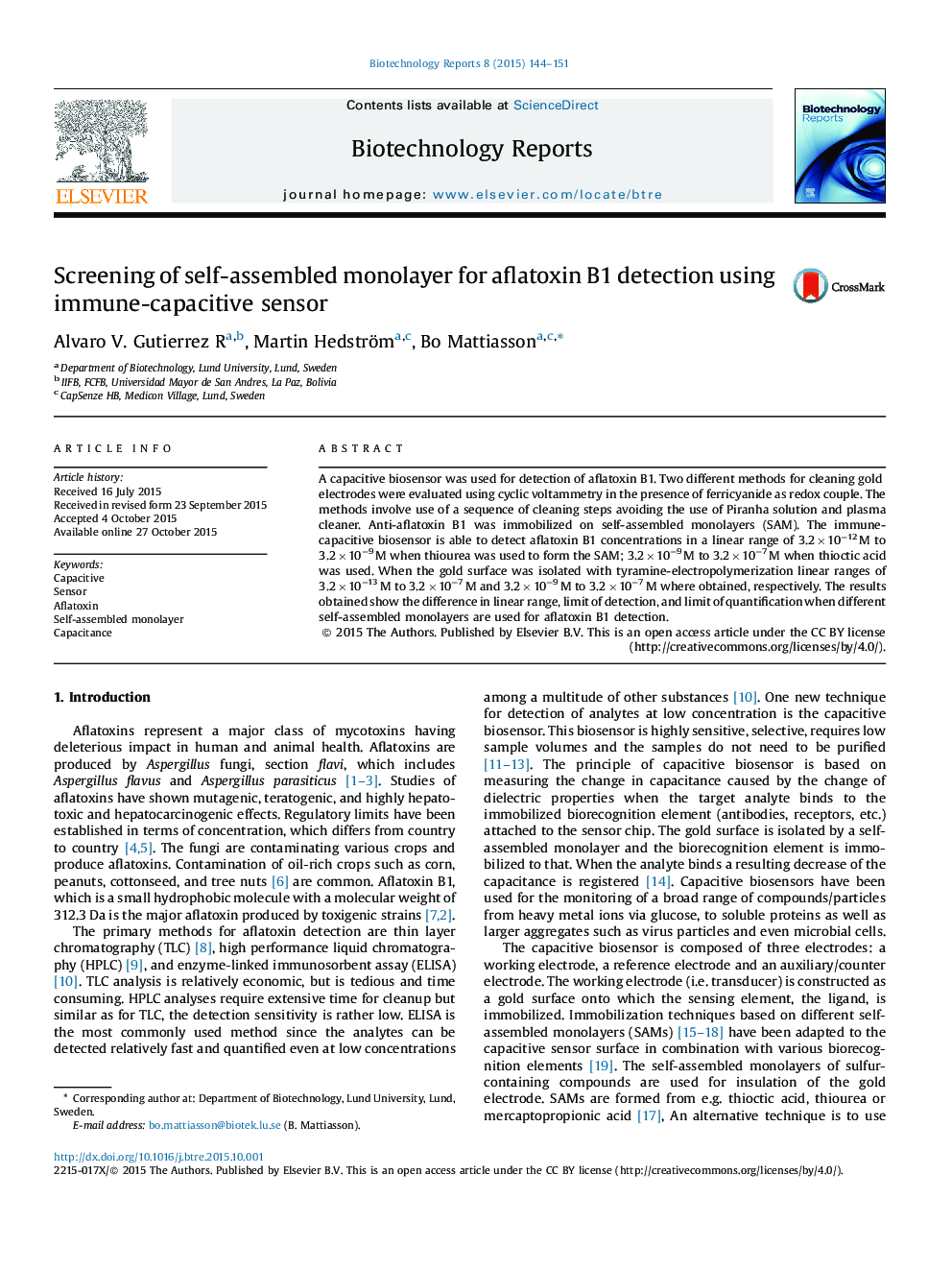| Article ID | Journal | Published Year | Pages | File Type |
|---|---|---|---|---|
| 870611 | Biotechnology Reports | 2015 | 8 Pages |
A capacitive biosensor was used for detection of aflatoxin B1. Two different methods for cleaning gold electrodes were evaluated using cyclic voltammetry in the presence of ferricyanide as redox couple. The methods involve use of a sequence of cleaning steps avoiding the use of Piranha solution and plasma cleaner. Anti-aflatoxin B1 was immobilized on self-assembled monolayers (SAM). The immune-capacitive biosensor is able to detect aflatoxin B1 concentrations in a linear range of 3.2 × 10−12 M to 3.2 × 10−9 M when thiourea was used to form the SAM; 3.2 × 10−9 M to 3.2 × 10−7 M when thioctic acid was used. When the gold surface was isolated with tyramine-electropolymerization linear ranges of 3.2 × 10−13 M to 3.2 × 10−7 M and 3.2 × 10−9 M to 3.2 × 10−7 M where obtained, respectively. The results obtained show the difference in linear range, limit of detection, and limit of quantification when different self-assembled monolayers are used for aflatoxin B1 detection.
Graphical abstractFigure optionsDownload full-size imageDownload as PowerPoint slide
